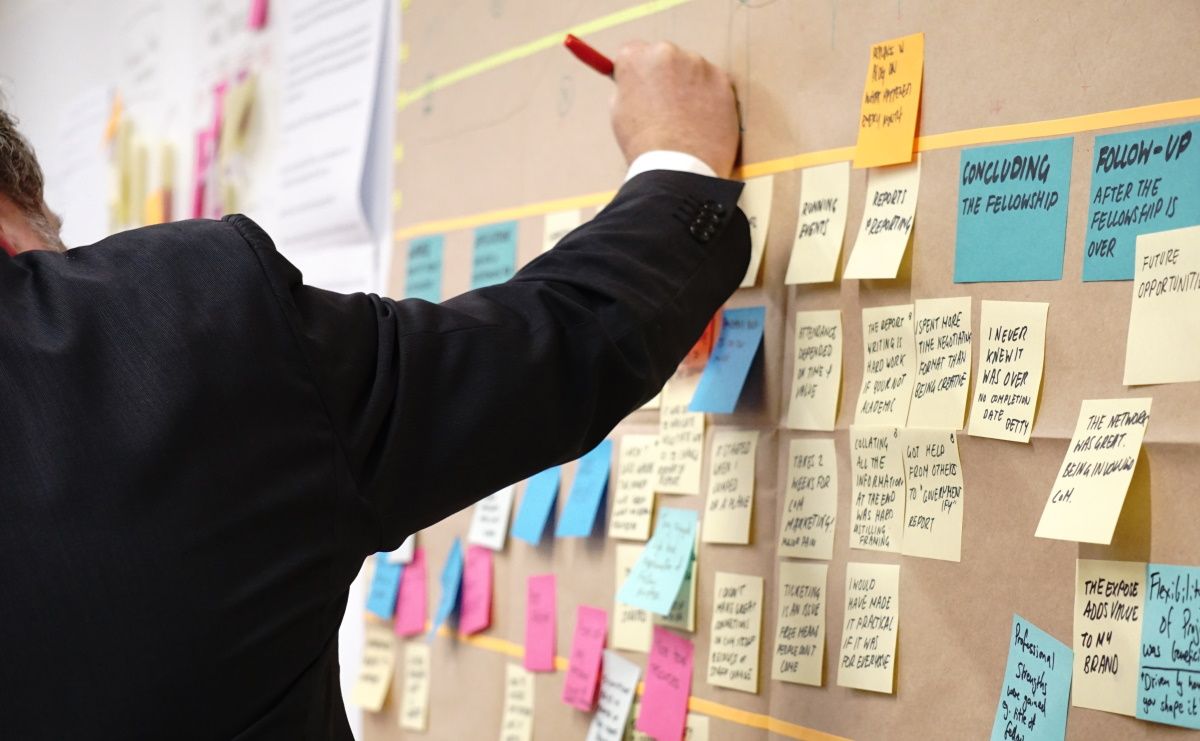Despite how easy it may seem, there's a bit learning curve in understanding the project management methodologies of Kanban and Scrum. Without comprehending what they are, choosing which frameworks can work for your particular projects, let alone implement them successfully, may get tricky.
So, let’s understand Kanban and Scrum, the two agile frameworks, in detail, along with the difference between the two and which one you should consider.
What Is Kanban?
Definition
Kanban is an agile methodology (a project management system based on 12 principles and values) and helps you complete your work by visualizing it. It makes your team more effective through a continuous workflow, encourages high-quality outcomes due to its adaptive nature, and enables you to finish work a little faster with its limit to the work in progress (WIP) rule. We'll discuss it all in detail in a bit.
Framework
To begin with this methodology, you can either use a physical Kanban board or a software-based Kanban tool.
A typical Kanban board consists of three primary columns: To-Do, In-Progress, and Done. You can include more of them depending on the complexity of your project—for instance, if you provide writing services, your columns can be: Pitch Development, Draft, Edit, Ship, and Promote.
Moreover, the practice involves a rule of limiting the WIP. It means you decide the number of items that can remain in a particular column before starting work. Depending on the capacity of your team and the current need, you can either restrain moving a card from the previous list to the next or move cards to the next column to speed up the process.
Besides that, here are some other rules to follow:
- Manage Flow: To ensure the cards move across the board faster and seamlessly, everyone on the team will need to have a clear understanding of the work. That leads us to the following rule.
- Explicit Policy: It encourages the Kanban users to map out clear guidelines and rules for the project and a detailed explanation of the quality they expect for the final product.
- Feedback Loops: The team members receive feedback every morning on the previous day's work. Moreover, they give an update on the current day’s to-do list.
- Collaboration: Depending on the given feedback, the team members make changes to the tasks before moving forward. If we take the above example of writing services, let's say the editor finds major issues in the draft and provides feedback to the writer. They'll move the card back to the draft column to make the changes. Until the writer fixes the issues, the card cannot move ahead on the board.
Metrics
The principal metric of Kanban is the lead time. It means the period between the arrival of a new task and its completion.
Change Philosophy
The Kanban method is all about flexibility. You can change things as you go based on your priority. For instance, if a new, more critical assignment arrives, you can put an existing, low-priority task on hold and add the new work to the backlog.
Furthermore, you can continue working on a current task based on the feedback received. Plus, if your team changes, then depending on the capacity of the existing group members, you can also adjust the WIP limit for quality work and team efficiency.
Tools
You can use Kanbanize, Kanban Flow, or Jira Software to implement the Kanban project management methodology.
What Is Scrum?
Definition
Scrum is also an agile framework that uses an empirical (or empiricism) approach. It’s a scientific theory that says that all knowledge is based on experience.
To use this project management methodology, you'll need a team that completes an increment of work or product to be shipped in a set interval of time. The period in which the team completes the work is called Sprint. For instance, if your project is to publish an e-commerce website, here's how you can divide it into Sprints:
- Sprint 1: Develop a public-facing website.
- Sprint 2: Make the products available on the Home page.
- Sprint 3: Enable the customers to make online purchases on the website.
On completion of a Sprint, the product is shipped or made available for customers to gather their real-time feedback. Based on that, it’s improved.
Roles
These are the specific roles you’ll need to implement the Scrum project management methodology.
- Product Owner: The project owner ensures that the team is working efficiently and delivering quality.
- Scrum Master: The Scrum Master divides the project into increments (Sprints), assigns tasks to developers, and ensures that everything goes by the Scrum rules.
- Developer: The person (or people) who work on the tasks in a Sprint.
Framework
- Sprint Planning: The Project Owner, along with the Scrum Master and Developers, decides the product backlogs and the timeline to complete a Sprint and deliver a high-quality product.
- Daily Scrum: These are the quick 15-20 minutes meetings, also called daily stand-ups, held to review what happened the previous day and ensure things are moving on time.
- Iteration Review: This is when the finished Sprints are reviewed and demonstrated.
- Retrospective: The combined external (from the customers) and internal feedback are given. This review session mainly helps the team understand what went well, what did not, and how they should operate to deliver high-quality future Sprints.
Metrics
The metrics in Scrum are the Story Points. This is an estimated unit of effort that will take to complete a Sprint—for instance, 1 Story Point can be equal to 4-5 hours, and 2 Story Points can be 5-10 hours.
Based on that, the Story Points of a Sprint can be anything like 20, 35, 41, or so.
Change Philosophy
The teams aim to finish a particular Sprint in the timeline provided. The change is only implemented upon delivering the final product and receiving customer feedback.
Since the changes are only made at the end, the retrospective session is mainly held to ensure minimum negative feedback is received over time and the delivered Sprints are of high quality.
Tools
You can use nTask, Zoho Sprint, or Jira Software to implement this project management methodology.
The Difference Between Scrum and Kanban
|
Kanban |
Scrum |
|
|
Nature |
Adaptive: Use the visuals to move forward in the process and complete the work |
Perspective: Improve the tasks based on experience, prioritization, and real-time feedback. |
|
Framework |
Kanban board is used to visualize the work. |
The work is done based on Sprint planning, Sprints, Daily Stand-ups, Iteration review, and Retrospectives. |
|
Cadence |
Continuous flow, feedback loops. |
Fixed-length Sprints (2 weeks or 1 month) based on Story Points. |
|
Roles |
No particular roles are required. |
Product Owner, Scrum Manager, Developer. |
|
Software |
Kanbanize, Kanban Flow, Jira Software |
nTask, Zoho Sprint, Jira Software |
Which One Is Right for You?
You can choose either Kanban or Scrum, depending on your type of project.
You can go with Kanban, if:
- Your project requires flexibility of time.
- You need to visualize the tasks to stay on top of everything.
- You want an adaptive method and need to fix things as you go to ensure the delivery of a high-quality product.
Choose Scrum, if:
- You have a complex project that requires a specific team to ensure everything works smoothly.
- You need to complete it in a given time.
- You give importance to customer feedback.
Kanban or Scrum: Which One Do You Choose?
Both of the methodologies are great. If you’re finding it hard to choose between the two, you can implement both the Kanban and Scrum methodologies simultaneously—for instance, Scrum to complete your overall project and Kanban to work on your Sprints effectively.






